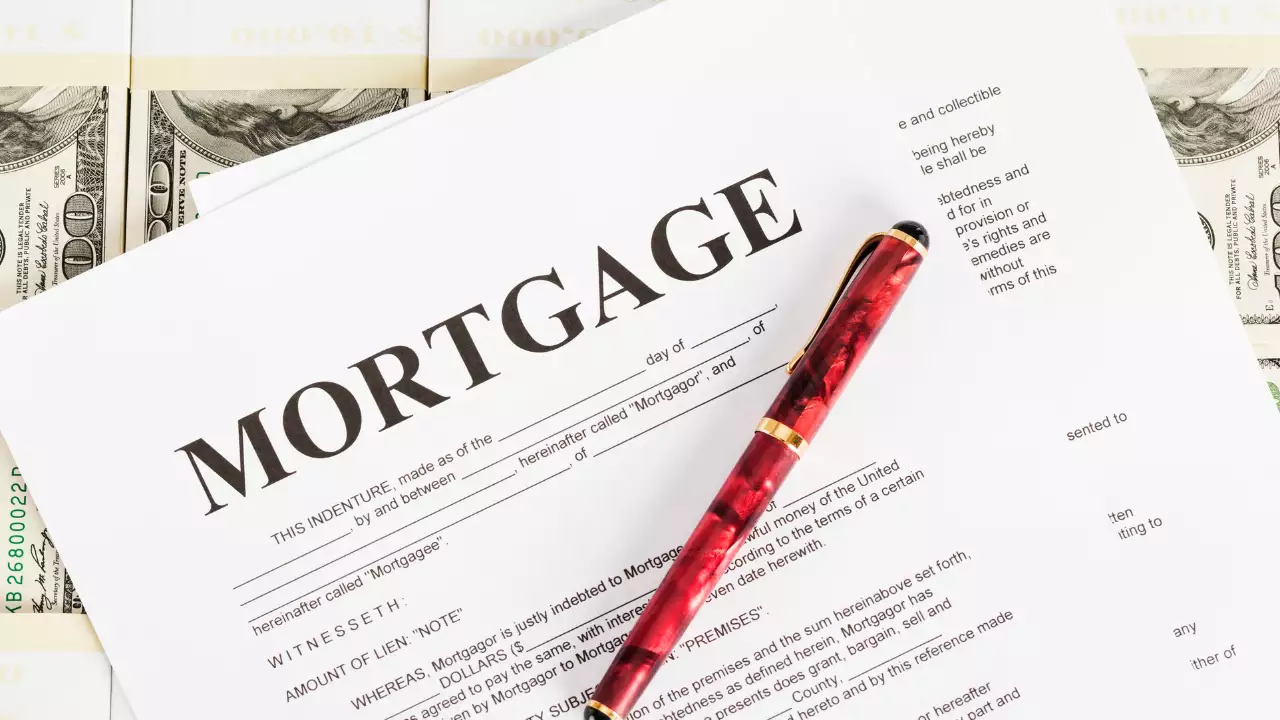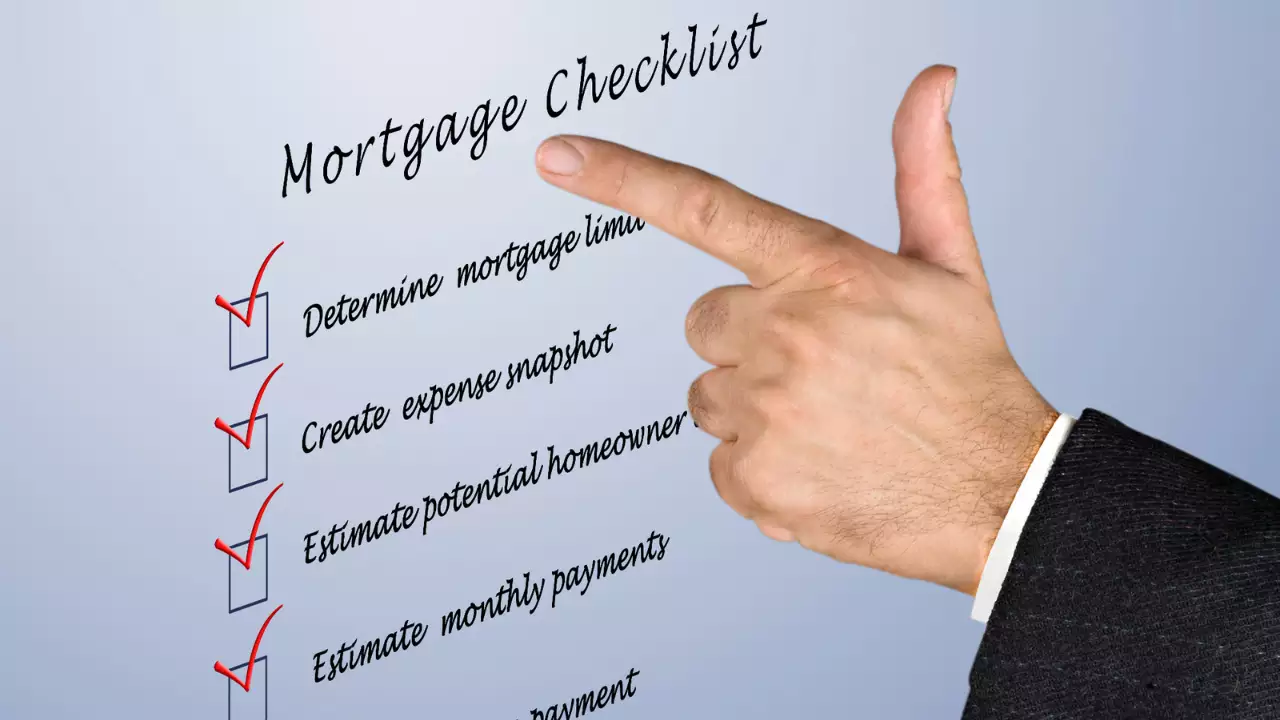A mortgage is a loan used to finance the purchase of a home or other real estate. The property being purchased serves as collateral for the loan. This means that if the borrower stops making payments, the lender can foreclose on the home and take ownership of it.
Before we start, here is a reference table of
Common Mortgage Terms and Definitions
| Term | Definition |
|---|---|
| Principal | Original amount borrowed |
| Interest | Cost of borrowing money |
| PITI | Principal, interest, taxes, insurance |
| Down Payment | Upfront payment toward purchase price |
| Mortgage Insurance | Added insurance when down payment under 20% |
| Credit Score | Measure of credit risk level |
| Debt-to-Income Ratio | Total monthly debt payments divided by gross monthly income |
| Appraisal | Third-party estimate of property value |
| Title Search | Research to confirm clean ownership of property |
| Underwriting | Process of approving mortgages based on risk |
| Closing Disclosure | Final loan terms and closing costs |
There are two main types of mortgages:

Fixed-Rate Mortgages
With a fixed-rate mortgage, the interest rate stays the same for the entire term of the loan (usually 15 or 30 years). This provides predictability in monthly payments. However, fixed-rate mortgages typically have higher interest rates than adjustable-rate mortgages.
Adjustable-Rate Mortgages (ARMs)
With an adjustable-rate mortgage, the interest rate changes periodically based on market conditions. ARMs often offer lower initial interest rates but less long-term predictability. After an introductory period, the rate and monthly payments can go up or down.
Understanding Mortgage Rates
Mortgage rates are largely determined by economic factors like inflation, employment levels, and bond yields. However, your personal financial profile also affects the rate you will be offered.
Key Factors That Influence Mortgage Rates
- Credit score: Borrowers with higher credit scores are seen as lower risk and tend to get better rates. Aim for a score above 740.
- Down payment: A larger down payment signals you are less of a risk to lenders. It can earn you a lower rate.
- Debt-to-income ratio: Lenders look at your total monthly debt payments compared to your gross monthly income. The lower this ratio, the better.
- Loan type: Government-backed loans like FHA and VA mortgages carry lower interest rates but also stricter eligibility requirements.
- Market conditions: When the economy is strong, rates tend to rise. When growth is slower, rates tend to fall.
Comparing Mortgage Rate Offers
Be sure to shop around with multiple lenders to compare interest rates and fees. Look beyond just the interest rate at factors like origination charges, discount points, and closing costs. Ask lenders for a Loan Estimate to see a detailed summary of a loan offer. Compare Annual Percentage Rates (APRs) across lenders, as this reflects the true cost of a loan.
Understanding the Mortgage Application Process

The mortgage application process involves gathering paperwork, submitting your application, undergoing underwriting, and closing on your loan. Here are the key steps:
1. Get Pre-Approved
Before house hunting, speak with a lender to get pre-approved for a mortgage. This shows sellers you are serious and know what you can afford.
2. Compare Mortgage Lenders
Shop rates from multiple lender types, including banks, credit unions, and online lenders. Compare interest rates, fees, and customer service.
3. Submit Your Application
Once you have an accepted offer on a home, apply for your mortgage. Be responsive to requests for paperwork to keep the process moving.
4. Undergo Underwriting
In underwriting, the lender verifies your finances and eligibility. This involves checking documents like tax returns, pay stubs, and bank statements.
5. Complete the Appraisal
An appraisal determines the property’s market value to ensure it’s worth the loan amount. Low appraisals can put loans at risk.
6. Close on Your Mortgage
At closing, you’ll finalize paperwork and payments. This includes wiring your down payment and closing costs to the title company.
Key Concepts for First-Time Homebuyers

If you’re a first-time homebuyer, there are some key things to understand about the mortgage process:
Down payments: You typically need a down payment of 3-20% of the home’s value. First-time buyer programs can help with down payments.
Mortgage insurance: If your down payment is less than 20%, you usually need to pay mortgage insurance until you reach 20% equity.
Closing costs: In addition to the down payment, plan for 2-5% of the loan amount for upfront fees and closing costs at mortgage closing.
Shopping early: Get pre-approved early and compare multiple lender rate offers and cost estimates. This puts you in the best position to find the optimal loan program.
Credit history: Good credit (scores above 740) qualifies you for better rates. Review your credit reports from all three bureaus and correct any errors.
Debt-to-income ratio: Lenders look closely at your current debts compared to income. Pay down debts and avoid new ones when preparing to get a mortgage.
Prepared documentation: Have pay stubs, tax returns, bank statements, and other paperwork ready to make the application process smooth and efficient.
Knowledge is power: Understand key mortgage terms and concepts so you can be an informed, empowered borrower throughout the mortgage process.
Mortgage Application Checklist

Here’s a checklist of items needed to apply for a mortgage:
Identification
- Driver’s license or other government-issued ID
- Social Security card or ITIN assignment letter
Income Documentation
- W-2s or 1099s from the last two years
- Recent pay stubs showing year-to-date earnings
- Documentation of any other income like bonuses, commissions, or investments
Asset Documentation
- Two months of bank statements for checking, savings, retirement, and other accounts
- Documentation of any large deposits or transfers
Credit Information
- Authorization to check your credit report
- Letters explaining any credit issues or discrepancies
Property Information
- Purchase agreement listing price, down payment, contingencies, etc.
- Information on any current mortgages if this is a refinance
Additional Items
- Federal tax returns from last two years
- Divorce decree or separation agreement if applicable
- Gift letter for any gift money being used
- Explanation of inquiries or new accounts if credit recently checked
Mortgage Process Timeline
While timelines can vary, you can expect the mortgage process to follow this general schedule:
Pre-Approval (1 week)
- Submit financial documentation for review
- Receive pre-approval letter with rate quote
Shopping (2-8 weeks)
- Research mortgage programs and interest rates
- Compare costs and fees from multiple lender quotes
Application (1 week)
- Formally apply for mortgage once under contract
- Authorize credit check
Processing (2-8 weeks)
- Provide documentation to verify application details
- Get appraisal and inspection of property
Underwriting (1-2 weeks)
- Loan underwriter reviews full application package
- Additional conditions may be requested
Closing (1-2 weeks prior to possession date)
- Final underwriting approval 24-48 hours before closing
- Sign documents and transfer down payment funds
So in total, expect 2-3 months from pre-approval to closing for conventional financing. VA and FHA loans may take longer due to appraisal scheduling.
Mortgage Calculations

When assessing affordability or comparing loan offers, have a grasp on key mortgage calculations:
Principal and Interest Payments
The principal is the amount borrowed. Interest accrues on the principal based on the mortgage rate. Your monthly mortgage payment is divided into principal and interest based on an amortization schedule.In the early years, more goes to interest because interest accrues on the larger loan balance. Over time, more goes to principal to pay down the loan.
Mortgage Insurance Premiums
If your down payment is under 20%, you likely need to pay mortgage insurance. This is typically 0.5-1% of the total loan amount, divided into your monthly payment.
Property Taxes and Insurance
Your lender collects extra monthly to cover annual property taxes and homeowner’s insurance premiums. If not enough is collected, you pay shortages directly.
Total Monthly Payment
This includes principal/interest, mortgage insurance, taxes, insurance, and any HOA fees. Make sure you budget for the total payment amount.
Qualifying Ratios
Lenders look at your total debt payments compared to income (DTI) and specifically mortgage payment to income (front-end ratio). These need to be within set limits.
Conclusion
There you have it.
Sources:
https://www.cnbc.com/select/what-is-a-mortgage-and-how-does-it-work/
https://www.consumerfinance.gov/consumer-tools/mortgages/answers/basics/
https://www.mpamag.com/us/mortgage-industry/guides/reasons-why-mortgage-rates-are-going-up/455281
https://www.consumerfinance.gov/owning-a-home/explore/home-loan-toolkit/
https://www.investopedia.com/articles/pf/05/020705.asp
https://www.consumerfinance.gov/about-us/blog/7-factors-determine-your-mortgage-interest-rate/
https://www.centralbank.net/learning-center/mortgages-101-understanding-the-basics/
https://www.bankofamerica.com/mortgage/learn/guide-to-the-mortgage-loan-process/